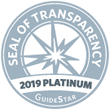BACKGROUND
Thyroid cancer is common and usually has an excellent prognosis. This is largely because we have very effective treatments. Surgery is the usually first option. Historically, surgery was usually a total thyroidectomy to remove the entire thyroid and was often followed by radioactive iodine therapy to destroy all remaining thyroid cancer cells. More recently, a less aggressive approach is recommended, especially with small thyroid cancers with low-risk features. Radioactive iodine therapy is not an option with a lobectomy (removing 1 lobe of the thyroid, leaving the other lobe intact). Even in patients that undergo a total thyroidectomy, radioactive iodine is used less often and is reserved for patients with higher risk thyroid cancers.
Radioactive iodine therapy does cause side effects. It may damage the salivary glands, causing permanent dry mouth (xerostomia), and radiation may raise the risk of developing other cancers later in life. Thus, limiting its use to only patients that would benefit is important. Studies have suggested that patients with low-risk thyroid cancer do not benefit from radioactive iodine therapy. Indeed, the American Thyroid Association now recommends against using radioactive iodine therapy in low-risk patients. Still, there hasn’t been enough long-term data proving that skipping radioactive iodine therapy is safe.
This study was done to examine the long-term results of omitting radioactive iodine therapy in treating patients with low-risk thyroid cancer.
THE FULL ARTICLE TITLE
Leboulleux S et al. Thyroidectomy without radioiodine in patients with low-risk thyroid cancer: 5 years of follow-up of the prospective randomised ESTIMABL2 trial. Lancet Diabetes Endocrinol,. 2025;13(1):38-46; doi: 10.1016/ S2213-8587(24)00276-6.




